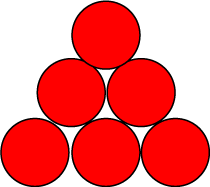Skip over navigation


Or search by topic
Number and algebra
Geometry and measure
Probability and statistics
Working mathematically
Advanced mathematics
For younger learners
Find the Difference
Age 5 to 7
Challenge Level 





Find the Difference printable sheet
Place the numbers 1 to 6 in the circles so that each number is the difference between the two numbers just below it.

For example:  5 - 2 = 3
5 - 2 = 3
You could use this interactivity to try out your ideas:
Can you find more than one solution?
Can you find all the possible solutions? How do you know you have found them all?
Related Collections
You may also like
Biscuit Decorations
Andrew decorated 20 biscuits to take to a party. He lined them up and put icing on every second biscuit and different decorations on other biscuits. How many biscuits weren't decorated?

